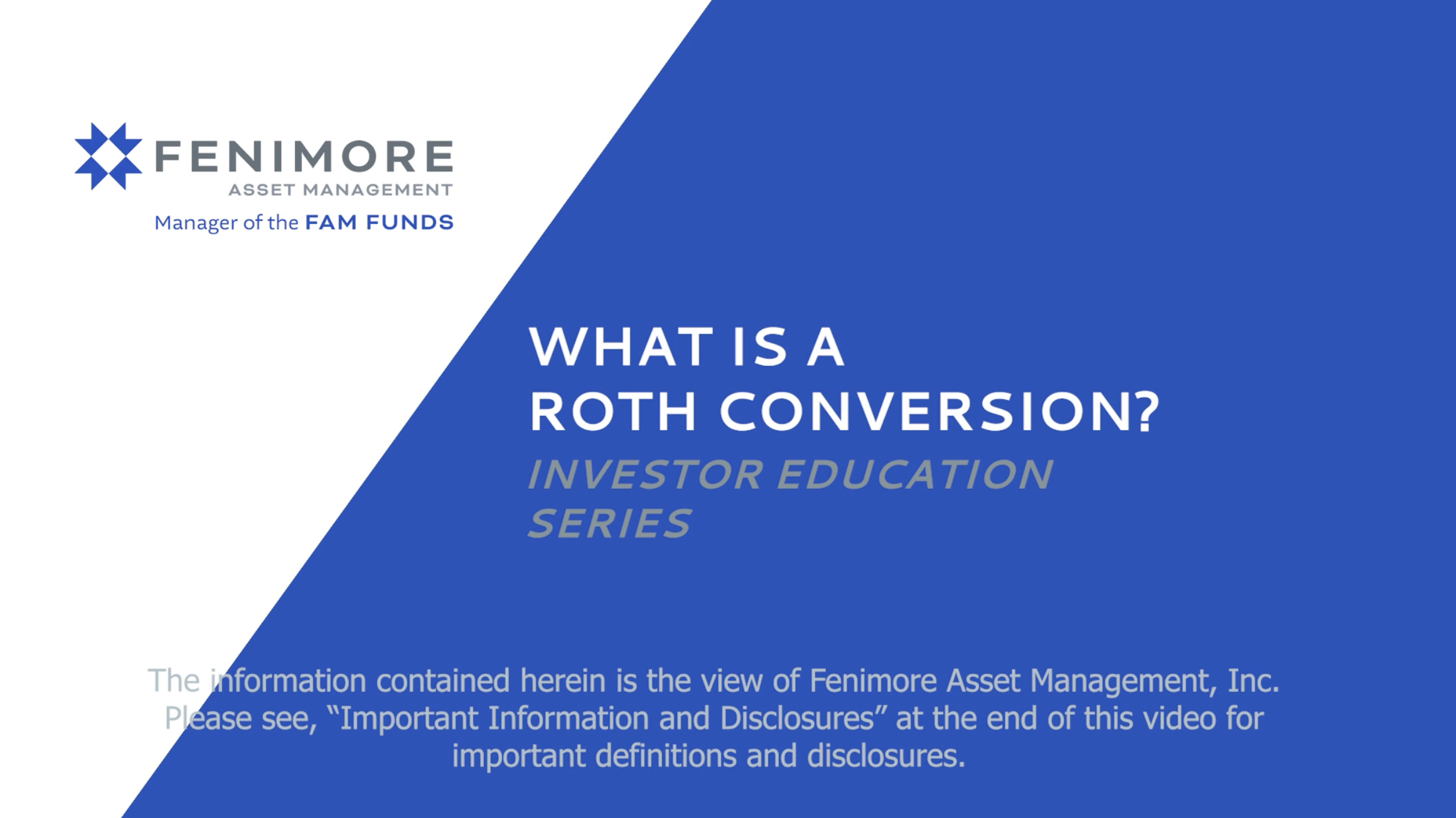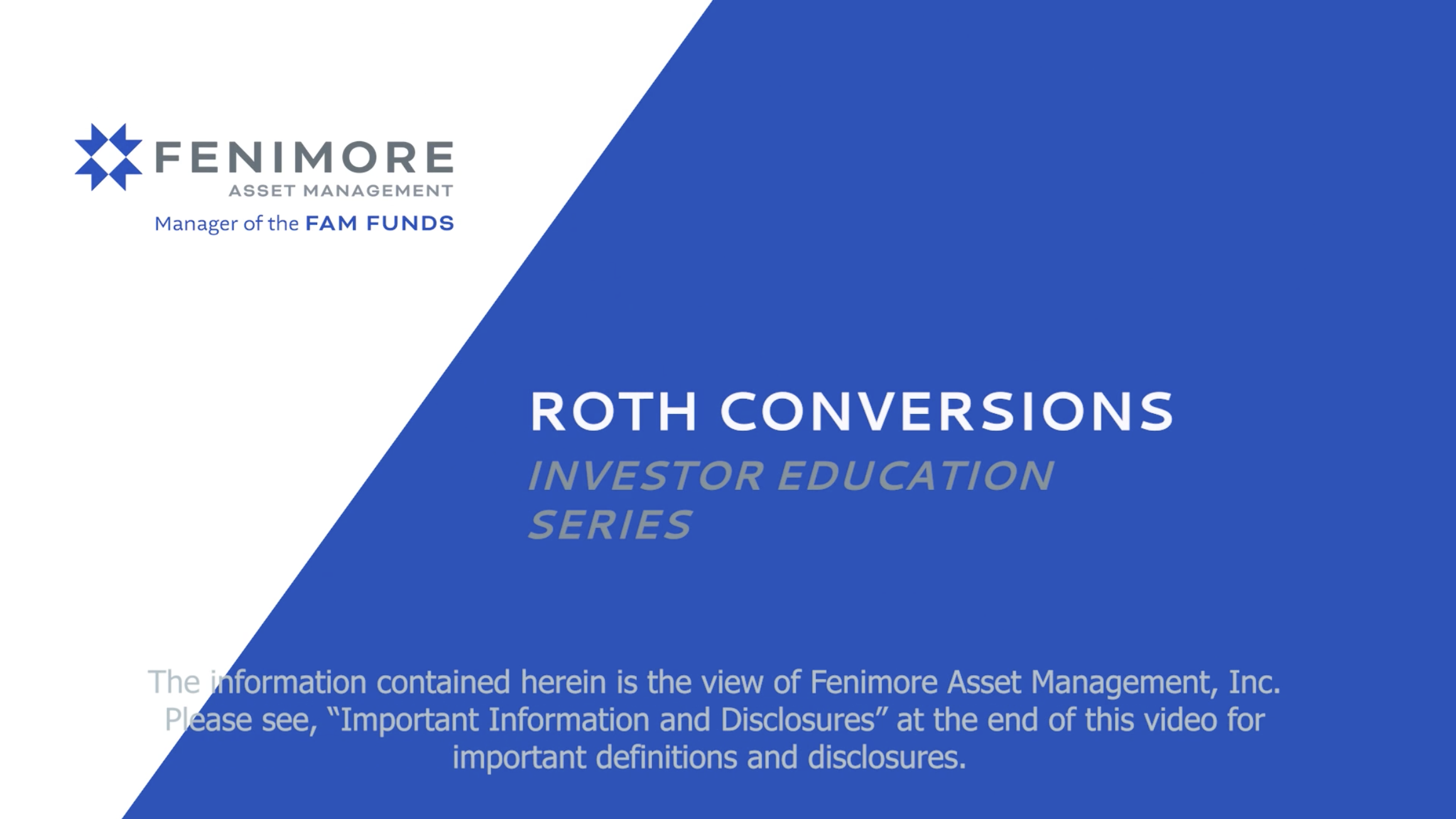Transfers, Rollovers and Conversions
Transfers, Rollovers and Conversions
Move your retirement savings without losing tax benefits.
When moving money between your IRAs and retirement plans, be sure you understand the rules.
Your retirement savings accounts are portable.
- IRA-to-IRA
- IRA-to-retirement plan
- Retirement plan-to-IRA
- Retirement plan-to-retirement plan
There are many reasons for moving your retirement assets to another retirement savings account. Perhaps you’ve left a job, your financial circumstances have changed, or you’re looking for ways to better maximize
your retirement savings. Whatever the reason, there are portability options available. Some preserve the tax-deferred nature of your assets, and some may have tax consequences.
Consider visiting with your competent tax or financial advisor about what’s best for your financial situation before moving your IRA or retirement plan money.

IMPORTANT FENIMORE ASSET MANAGEMENT DISCLOSURES
This brochure has been purchased through Ascensus, LLC.
The views and opinions expressed in this article are those of Ascensus and do not necessarily reflect the views of Fenimore Asset Management or its officers. Fenimore Asset Management or its officers have no editorial control over the content of the article or subject matter, and is independent of Ascensus.
The information herein is subject to change and is not intended to be complete or to constitute all of the information necessary to evaluate adequately the consequences of investing in any securities or other financial instruments or strategies described herein. These materials also include information obtained from other sources believed to be reliable, but Fenimore does not warrant its completeness or accuracy. In no event shall Fenimore be liable for any use by any party of, for any decision made or action taken by any party in reliance upon, or for any inaccuracies or errors in, or omissions from, the information contained herein and such information may not be relied upon by you in evaluating the merits of participating in any transaction.
In part, the purpose of this presentation may be to provide investors with an update on financial market conditions. The description of certain aspects of the market herein is a condensed summary only. This summary does not purport to be complete and no obligation to update or otherwise revise such information is being assumed. These materials are provided for informational purposes only and are not otherwise intended as an offer to sell, or the solicitation of an offer to purchase, any security or other financial instrument. This summary is not advice, a recommendation or an offer to enter into any transaction with Fenimore or any of their affiliated funds.
We undertake no duty or obligation to publicly update or revise the information contained in this presentation. In addition, information related to past performance, while helpful as an evaluative tool, is not necessarily indicative of future results, the achievement of which cannot be assured. You should not view the past performance of Fenimore funds, or information about the market, as indicative of future results.
All projections, forecasts and estimates of returns and other “forward-looking” information not purely historical in nature are based on assumptions, which are unlikely to be consistent with, and may differ materially from, actual events or conditions. Such forward-looking information only illustrates hypothetical results under certain assumptions and does not reflect actual investment results and is not a guarantee of future results. Actual results will vary with each use and over time, and the variations may be material. Nothing herein should be construed as an investment recommendation or as legal, tax, investment or accounting advice.
Clients or prospective clients should consider the investment objectives, risks, and charges and expenses carefully before investing. You may obtain a copy of the most recent mutual fund prospectus by calling 800-932-3271 and/or visiting www.fenimoreasset.com.
There is no guarantee that any of the estimates, targets or projections illustrated in this summary will be achieved. Any references herein to any of Fenimore’s past or present investments, portfolio characteristics, or performance, have been provided for illustrative purposes only. It should not be assumed that these investments were or will be profitable or that any future investments will be profitable or will equal the performance of these investments. There can be no guarantee that the investment objectives of Fenimore will be achieved. Any investment entails a risk of loss. An investor could lose all or substantially all of his or her investment. Unless otherwise noted, information included herein is presented as of the date indicated on the cover page and may change at any time without notice.
Fenimore Asset Management Inc. is an SEC registered investment adviser; however, such registration does not imply a certain level of skill or training and no inference to the contrary should be made.















